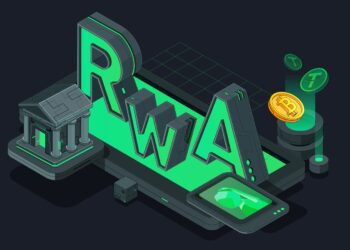- Web3’s sustainability is paramount as it emerges as a transformative technology, with significant capital markets showing interest in leveraging its power for the tokenization of assets.
- Chainlink 2.0 leads the charge in creating a sustainable oracle economy, ensuring long-term operability of the Web3 ecosystem by restructuring user fees, cutting operational costs, and strengthening cryptoeconomic security.
As the potential power of Web3 technology unfolds, it’s becoming evident that a robust, sustainable economic model is necessary to support the secure operation of its infrastructure and onboarding of new users. With an eye on the rising interest from conventional capital markets that seek to tap into the transformative potential of Web3 for streamlining operations and creating novel revenue channels, the need for economic sustainability becomes all the more imperative.
Sustainable oracle infrastructure is crucial for Web3’s long-term growth.
This blog looks at how value flows between blockchains, dApps, & oracles and how #Chainlink is pioneering a sustainable, incentive-aligned oracle economy to scale Web3 securely.https://t.co/x9ZhxliskI
— Chainlink (@chainlink) June 15, 2023
Addressing the potential infusion of trillions of dollars from traditional financial assets into on-chain formats, a well-rounded economic model for Web3 becomes a cornerstone. This model should ideally safeguard the viability of each tier of the Web3 tech stack, with a prime focus on sustainable oracle economics. Spearheading this endeavor is Chainlink, forging ahead to build a resilient oracle economy to bolster the entire Web3 ecosystem.
In this new Web3 economic structure, three key elements interplay: blockchains, applications, and oracles. Blockchains serve as the economic backbone, recording and updating asset ownership and executing smart contracts. Applications deliver valuable services to users, while oracles provide essential services not otherwise available on their native blockchain or centralized infrastructure.
To stimulate a two-sided market, participation from both users and service providers is essential. Token subsidization, a common strategy in Web3 protocols, offers a solution. By providing high-quality service supported through subsidies until user-generated fees can fully cover service costs, a sustainable model is born.
Understanding the economic sustainability of oracle networks is achieved by dissecting their operating costs into four primary categories: on-chain node costs, off-chain node costs, cryptoeconomic security costs, and coordination costs. Each category encapsulates a unique set of expenses and responsibilities, from gas fees for on-chain oracle reports to incentivizing honesty within the oracle network, and handling coordination services such as research and support.
Chainlink is stepping into the future with Chainlink Economics 2.0, aiming to strengthen user fees, reduce operational expenses, and enhance cryptoeconomic security. To achieve these goals, Chainlink 2.0 presents new monetization strategies such as usage-based payments and user fee-sharing. For budding projects, the Chainlink BUILD program provides Chainlink services for a share of the projects’ token supply.
Cost-reducing strategies include the implementation of OCR 2.0, low-latency oracles, and feed deprecation. The SCALE program gives applications the needed time to generate user fees, while the LINK token is pivotal in ensuring cryptoeconomic security.
No spam, no lies, only insights. You can unsubscribe at any time.
The sustainability of the Chainlink protocol and its services is crucial for maintaining security, reliability, and growth. With Chainlink 2.0, the aim is to establish sustainable oracle economics, thereby nurturing the evolution and expansion of Web3 applications.
Credit: Source link














































